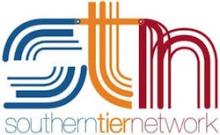Southern Tier Network Releases RFP: Responses Due September 28th
Not-for-profit Southern Tier Network (STN) is already providing infrastructure for local ISP Empire Access to compete with incumbents in some areas of south central New York state. Now that the dark fiber network construction is complete, STN recently released a Request for Proposals (RFP) for a last mile broadband pilot project. Responses are due September 28, 2017.
For this project, STN seeks ISPs interested in serving a particular area in Schuyler County with the possibility of expanding to serve more premises in the future. The area in question is underserved for both residential and business connectivity.
Connectivity Opportunity In Rural New York
The network began as a partnership between Southern Tier Central Regional Planning and Development Board, Corning Incorporated, and Chemung, Schuyler, and Steuben Counties. Corning contributed $10 million of the $12.2 million to deploy the original network, while the three counties shared the balance.
In 2013, STN received a $5 million New York Empire State Development fund grant, which allowed the nonprofit to expand the network into two more counties and to several local universities. The original 235-mile ring has since been extended to include more than 500 route miles. The network now touches nine counties.
Since becoming operational in 2014, STN has taken on a multifaceted task. In addition to establishing infrastructure to encourage better connectivity for residents and businesses, STN is serving public entities. The dark fiber network is improving local connectivity for public safety, schools, health care clinics, and municipal facilities.
Pilot With Larger Goals In Mind
Goals of the initiative, as stated in the RFP are:
1. Establish partnerships between the STN and interested providers for the betterment of the communities involved and for quality of life enhancements.



